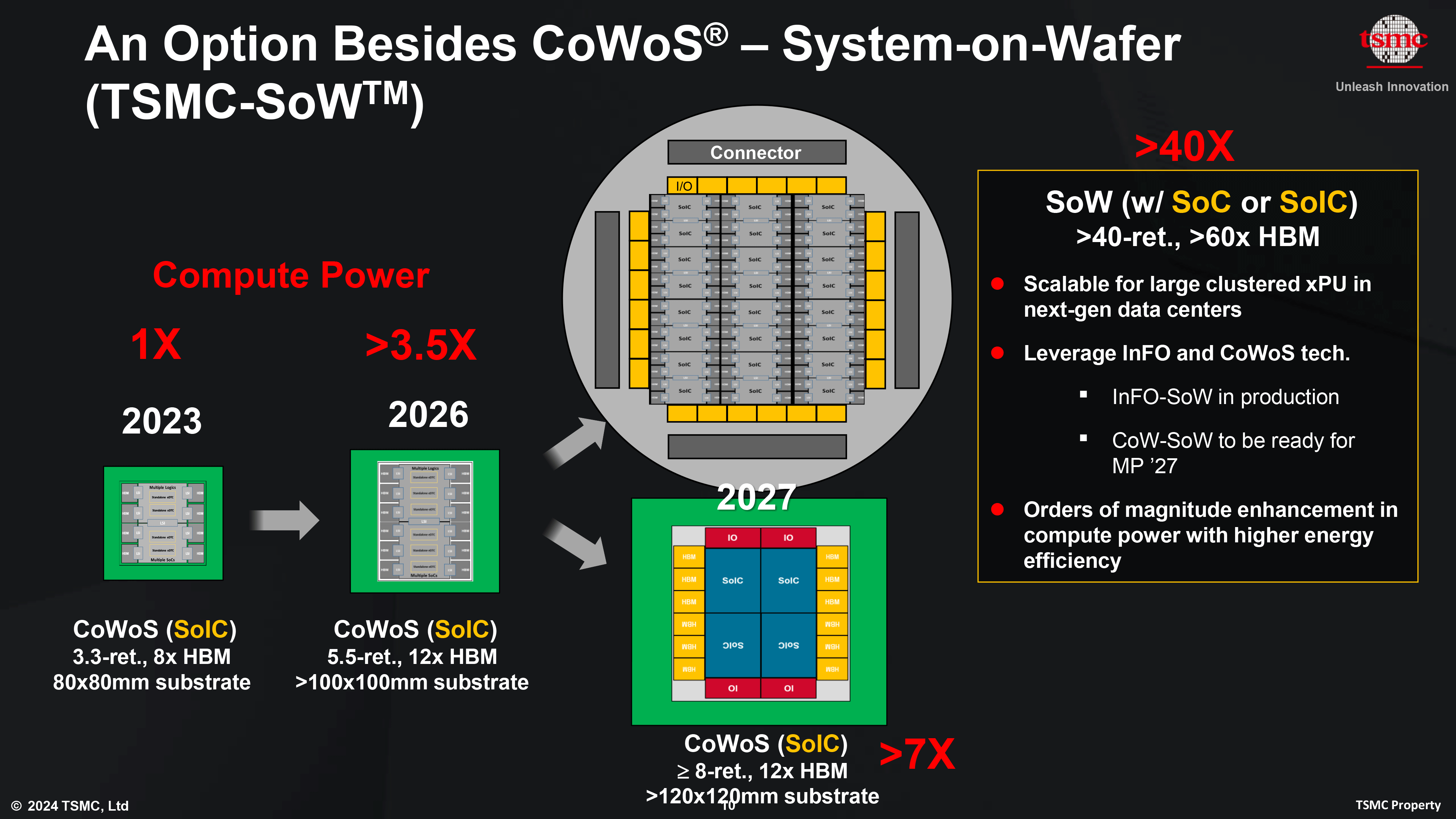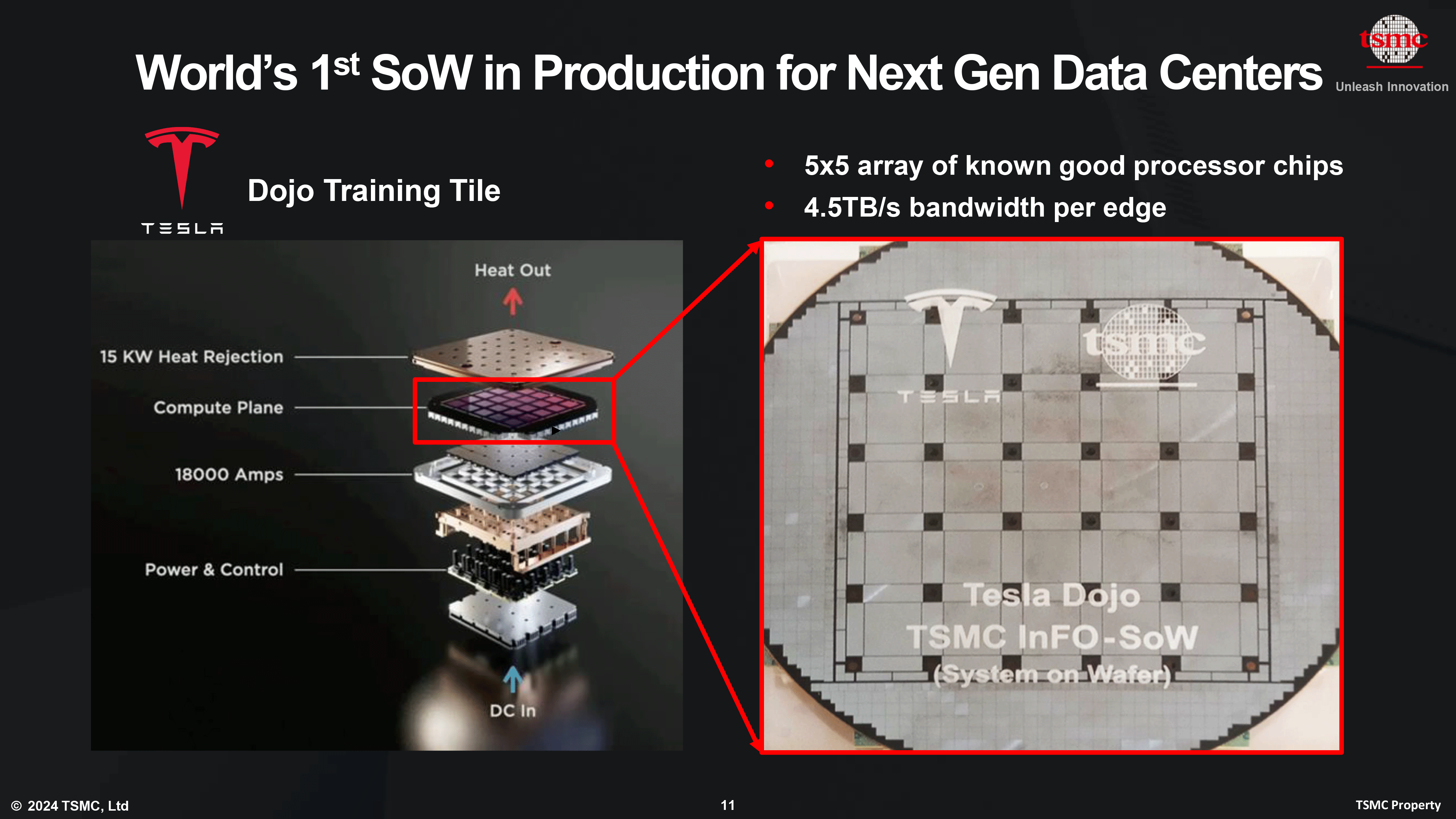TSMC to go 3D with wafer-sized processors — CoW-SoW technology allows 3D stacking for the world's largest chips
Massive wafer scale 'chips' to become even more formidable.

TSMC is taking the wafer-scale fabrication battle into the third dimension with a new technology. At its North American Technology Symposium, the company introduced its next-generation system-on-wafer platform—CoW-SoW—that will enable 3D integration with wafer-scale designs. This builds on the InFO_SoW system-on-wafer integration technology technology that TSMC introduced in 2020, which lets it build wafer-scale logic processors. So far, only Tesla has adopted this tech for its Dojo supercomputer, which TSMC says is now in production.
In its forthcoming CoW-SoW platform, TSMC will merge two of its packaging methods — InFO_SoW and System on Integrated Chips (SoIC) — into its system-on-wafer platform. Using the Chip-on-Wafer (CoW) tech will enable the stacking of memory or logic directly atop a system-on-wafer. The new CoW_SoW technology is expected to be ready for large-scale production by 2027, though it remains to be seen when actual products arrive on the market.
"In the future, using wafer-level integrations [will allow] our customers to integrate even more logic and memory together," said Kevin Zhang, Vice President of Business Development at TSMC. "SoW is no longer a fiction; this is something we already work with our customers [on] to produce some of the products already in place. We think by leveraging our advanced wafer-level integration technology, we can provide our customer a very important path that allows them to continue to grow their capability to bring in more computation, more energy efficient computation, to their AI cluster or [supercomputer]."
Currently, TSMC's CoW-SoW focuses on integrating wafer-scale processors with HBM4 memory. These next-generation memory stacks will feature a 2048-bit interface, which will make it feasible to integrate HBM4 directly on top of logic chips. Meanwhile, it may also make sense to stack additional logic on wafer-scale processors to optimize costs.
Wafer-scale processors in general (i.e., Cerebras's WSE), and InFO_SoW-based processors in particular, offer significant performance and efficiency benefits, including high-bandwidth and low-latency core-to-core communications, low power delivery network impedance, and high energy efficiency. As an added bonus, such processors also have additional redundancy in the form of 'extra' cores.
However, the InFO_SoW technology has certain limitations. For instance, wafer-scale processors made using this method rely entirely on on-chip memory, which may fall short for future AI needs (but is good for now). CoW-SoW will solve this, as it will allow putting HBM4 on such wafers. In addition, InFO_SoW wafers are processed using a single node, and this node does not support 3D stacking, which will be supported by CoW-SoW products.
Get Tom's Hardware's best news and in-depth reviews, straight to your inbox.

Anton Shilov is a contributing writer at Tom’s Hardware. Over the past couple of decades, he has covered everything from CPUs and GPUs to supercomputers and from modern process technologies and latest fab tools to high-tech industry trends.
-
edzieba A 'chip' sucking down 18,000 amps and shunting out 15kW. That'll need what, maybe 2 or 3 Noctua coolers?Reply -
HaninTH Immersion cooling will be necessary for these massive things? Possibly with an exotic coolant.Reply -
Notton How would you design a heatsink so it applies even pressure over that die size?Reply
How do you keep the die or joints from cracking when it goes through a heating/expansion and cooling/contraction cycle? -
Steve Nord_ Just regular microjet coolers would be lovely, but you guys are showing like legal size Culver's ads in a letter sized ad space, and it's trashing your columns. I'm not even getting swole from all the dairy, c'mon.Reply -
Mpablo87 I heard some Austrian Startup offers ideas for cooling ! ! ! ! !Reply
Maybe that size is acceptable ? ! ? ! ?

